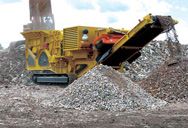extraction of gold

A systematic review of sustainable gold extraction from raw
2022.3.1 Results: 70% of gold extraction for the refractory gold ore; 95% for the oxidised gold ore. Case 5 - A chlorine-based solution was used to dissolve gold from a
More
Review A systematic review of gold extraction: Fundamentals ...
2022.10.15 Currently, the thiosulfate gold leaching operation at the Goldstrike mine, Nevada, of Barrick Gold Corp is the only large-scale gold extraction plant with an
More
Capture and Extraction of Gold from Aqueous
Description of the EC experimental setup; data of the gold extraction experiment; species of Au ions in aqueous solution; data on extraction of precious and base metals by Fe-EC; TEM and XPS data for precious
More
Eco-friendly and economical extraction of gold from a refractory gold ...
2020.12.1 Abstract Iodine–iodide leaching is an effective and environmentally friendly gold extraction method that is expected to replace cyanidation. However, as the price of
More
Solvent Extraction of Gold(III) with Diethyl Carbonate ACS ...
Developed in the mid-19th century, extraction of gold by chlorination was the first hydrometallurgical gold extraction process available on the commercial scale. By passing
More
Environmentally Benign, Rapid, and Selective Extraction of Gold
2017.6.14 The extraction of gold from ores and electronic waste is an important topic worldwide, as this precious metal has immense value in a variety of fields. However,
More
Eco-friendly and economical extraction of gold from a refractory gold ...
2020.12.1 1. Introduction. Cyanidation remains the main method for gold extraction in gold mines around the world because of its advantages of being a well-established process, strong adaptability, and easy process control (Asamoah, 2020; Nunan et al., 2017).Nevertheless, the dissolution rate of gold in cyanide solution is very slow
More
Gold processing Refining, Smelting Purifying
By 2000 bc the process of purifying gold-silver alloys with salt to remove the silver was developed. The mining of alluvial deposits and, later, lode or vein deposits required crushing prior to gold extraction, and this consumed
More
Gold : Mineral Properties, Formation, Mining,
2023.8.26 Open-pit Mining: Open-pit mining is a method used to extract gold from large, near-surface deposits. It involves the removal of overlying soil, rock, and vegetation to expose the gold-bearing ore. Once
More
Gold: History of Use, Mining, Prospecting, Assay Production
Extraction of gold and other precious metals from their ores by treatment with mercury is called amalgamation. Gold dissolves in aqua regia, a mixture of hydrochloric and nitric acids, and in sodium or potassium cyanide. The latter solvent is the basis for the cyanide process that is used to recover gold from low-grade ore.
More
Gold and Silver Extraction SpringerLink
2019.12.15 Abstract. Gold is considered a store of value and has been a sought-after metal since the dawn of human civilization. It was known to Egyptians as early as 3100 BC. The value of gold was reported to be two-and-one-half times the value of silver in the code of Menes, the founder of the first Egyptian dynasty. A gold mine in Nubia in Nile valley ...
More
(PDF) The extractive metallurgy of gold - ResearchGate
1998.12.1 This paper is a survey of the basic recovery methods and techniques used in extractive metallurgy of gold. Process fundamentals on mineral processing, ore leaching, zinc dust cementation ...
More
Gold Extraction Methods From Three Types of Ore
2024.2.4 However, extracting gold from quartz vein gold ore is a meticulous process that requires careful planning and execution. 1. Cyanide gold extraction includes crushing, leaching, filtering, adsorption, elution, etc. The first step in the method is crushing the quartz into small pieces. This can be done using a jaw crusher or a mortar and pestle.
More
Tuneable separation of gold by selective precipitation using a simple ...
2021.10.29 The extraction of gold from its ores and its recycling from waste materials represent significant technological and environmental challenges 1,2,3,4.Alternatives to the current industrial practice ...
More
Extraction of Gold - Atomistry
The extraction of gold by the cyanide-method is of great technical importance. It is effected by lixiviation with a solution of potassium cyanide, the gold being precipitated either by addition of zinc or electrolytically. The process was suggested by Mac Arthur and Forrest in 1385, and is based on the well-known solubility of gold in potassium ...
More
Environmentally Benign, Rapid, and Selective Extraction of Gold
2017.6.14 The extraction of gold from ores and electronic waste is an important topic worldwide, as this precious metal has immense value in a variety of fields. However, serious environmental pollution and high energy consumption due to the use of toxic oxidation reagents and harsh reaction conditions is a well-known problem in the gold industry.
More
Selective and rapid extraction of trace amount of gold from
2022.12.15 The present adsorbent delivers a gold adsorption capacity of 954 mg g −1, excellent selectivity and reusability, and can rapidly and selectively extract ultra-trace gold from seawater down to ...
More
Environmentally friendly extraction of gold from refractory
2019.3.20 The efficiency of gold extraction from sulphidic refractory ores (e.g., arsenopyrite (FeAsS) and pyrite (FeS 2)) by direct cyanidation is usually very low (Badri and Zamankhan, 2013, Faraz et al., 2014), since fine gold particles in these ores are mostly locked up in the bulk and therefore inaccessible to leaching agents and dissolved oxygen ...
More
Extraction of gold(III) using novel gemini-type benzimidazole ionic ...
2021.12.1 Novel gemini-type benzimidazole ionic liquid was applied for gold(III) extraction. • Thermodynamic parameters(Δ H θ, Δ G θ and Δ S θ) were obtained from thermodynamic data.[C 6 BIM 2][NTf 2] 2 showed excellent gold(III) extraction ability from secondary resources.. Gold(III) was stripped by CS(NH 2) 2 / HCl solution and
More
A systematic review of sustainable gold extraction from raw
2022.3.1 The main objective here is to discuss how the gold extraction process can be more sustainable, with a view to developing more greener leaching reagents. Introduction. Gold is the most important precious metal in the world, with estimated reserves of 54,000 tons (Garside, 2019). Global gold demand has increased in recent years,
More
Capture and Extraction of Gold from Aqueous Solution via
Gold mining from gold sources, such as natural ores, electronics, and other industrial wastes, is not yet feasible in terms of environmental costs and production efficiency. The trace quantity of Au in the aqueous solution limits its effective capture and extraction through conventional methods. Here, we report a homogeneous, spontaneous, and selective Au
More
Gold Extraction Recovery Processes - 911 Metallurgist
2016.2.29 For gold extraction the strength of cyanide solution ranges from 0.01 to 0.05%. Lime is added to the process in order to have a pH near to 10-11. The different minerals foreign substances can affect the cyanidation process in a number of different ways. Silver is usually present with gold either in small or high amounts.
More
Gold Extraction / Mining Goldfo
Extraction of Gold by the Amalgam Process. The amalgam process is the oldest technical method of extracting gold and was used in antiquity. With the amalgam process the gold bearing rock is likewise crushed to fine sand. Afterwards mercury is added to the rock dust. Gold has the property that enables it to join to the surface of the mercury.
More
Solvent Extraction of Gold(III) with Diethyl Carbonate ACS ...
Diethyl carbonate (DEC) was evaluated as a green, renewable alternative to methyl isobutyl ketone and dibutyl carbitol for the recovery of gold from copper-rich sources, such as anode slimes, by solvent extraction from chloride solutions. DEC is a powerful extractant at high chloride concentrations and can be used to sequester and concentrate gold from large
More
On the extraction of gold (III) with dibutyl carbitol
2012.11.8 Extraction of HAuCl4 with diethylene glycol dibutyl ether (dibutyl carbitol) was studied in the gold(III) concentration range 10−6−1.5 mol/L at cHCl = 1 mol/L and T = 25°C, distribution ratios were determined. Experiments were made at other cHCl. A unified extraction isotherm was obtained with the use of activity coefficients of HAuCl4. The
More
Extraction of gold from a gold concentrate using a lixiviant ...
2022.5.1 Gold extraction from ores using non-cyanide lixiviants is currently a significant topic worldwide. Herein, we report the synthesis of an eco-friendly lixiviant that not only is much less toxic than sodium cyanide (NaCN) but also shows excellent effect in the leaching of gold. The lixiviant can be synthesized from roasting of the well-mixed
More
Ultrasound-assisted cyanide extraction of gold from gold
2020.6.1 At the conventional temperature of 25 °C, ultrasound-assisted extraction obtained a 0.1% higher extraction rate of gold compared with conventional extraction, with the unit consumption of NaCN reduction of 15%. The analysis of kinetic model also demonstrated that sonication indeed improved the reaction of gold leaching greatly.
More
A systematic review of gold extraction: Fundamentals,
2022.10.15 Chlorination was extensively used in gold extraction in the late 19th century until the development of cyanidation, a more economical process with a higher stability complex, rapidly replacing chlorination. However, with the increasing refractory nature of gold ores and restrictions on cyanidation, interest in halide-based gold leaching ...
More
Extraction of Gold from Gold Chloride Solution by the Depth
2021.11.23 Gold is a rare strategic precious metal, which is widely used in gold jewelry, monetary and investment items, electronic communication, and chemical medical technology. 1,2,3,4 With the continuous exploitation of a single gold ore resource, gold-bearing secondary materials have gradually become the main raw materials for gold
More
Non-toxic technology extracts more gold from ore - Phys
2021.10.1 The wait for a scalable non-toxic alternative may now be over as a research team from Aalto University in Finland has successfully replaced cyanide in a key part of gold extraction from ore. The ...
More
Highly efficient and selective extraction of gold by
2022.8.2 Here we report an exceptionally high gold extraction capacity of chemically reduced graphene oxide (rGO), reaching 1850 mg/g and 9059mg/g when extracting gold from its 10 ppm solution at 25°C and ...
More
Extraction of gold from refractory gold ore using bromate
2019.6.1 The gold extraction rate for raw gold ore under optimum conditions (0.25 M potassium bromate, 0.08 M ferric chloride, 0.4 M hydrochloric acid, extraction time of 5 min, stirring speed of 250 rpm, and liquid-to-solid ratio of 5) was 94.5%. For a gold flotation concentrate, the gold extraction rate was as high as 91.8%.
More
Stepwise extraction of gold and silver from refractory gold
2020.6.1 1. Introduction. Gold, a critically important noble metal with high corrosion resistant and durability properties, could be used as strategic reserves and manufacture corrosion-resistant high precision product (Azadi et al., 2019; Wu et al., 2019).Leaching of gold ores by cyanide in aerated alkaline slurries has been the dominant process for more
More
[2208.01435] Highly Efficient and Selective Extraction of Gold
2022.8.2 Here we report a reduced graphene oxide (rGO) material that has an ultrahigh extraction capacity for trace amounts of gold (1,850 mg/g and 1,180 mg/g to 10 ppm and 1 ppm gold). The excellent gold extraction behavior is accounted to the graphene areas and oxidized regions of rGO. The graphene areas spontaneously reduce gold ions
More- ق النسر برئاسة حبوب منع الحمل محطم
- الصين تكلفة طاحونة
- سحق أسس إلى داخل ال التعريف ذروة بسبب سبين
- شاشات لحصى في أفريقيا
- محطم الطين الفلبين كسارة الفك
- مخروط محطم المهنية
- الرسم البياني للتدفق من مطحنة فاخرة
- حجر الزاوية ركاز مطحنة
- moinhos para filito
- أناند تيمبي طاحونة الرياح الرأسية
- نيجيريا حالة محجر الحجر الجيري
- محطة غسيل الرمال المائية
- 500 مصنع سحق tph الموردين
- تقرير عن عملية الخراطة doc
- مطحنة تبلد مزدوجة ترس محرك الأقراص